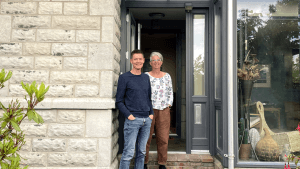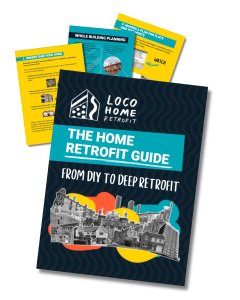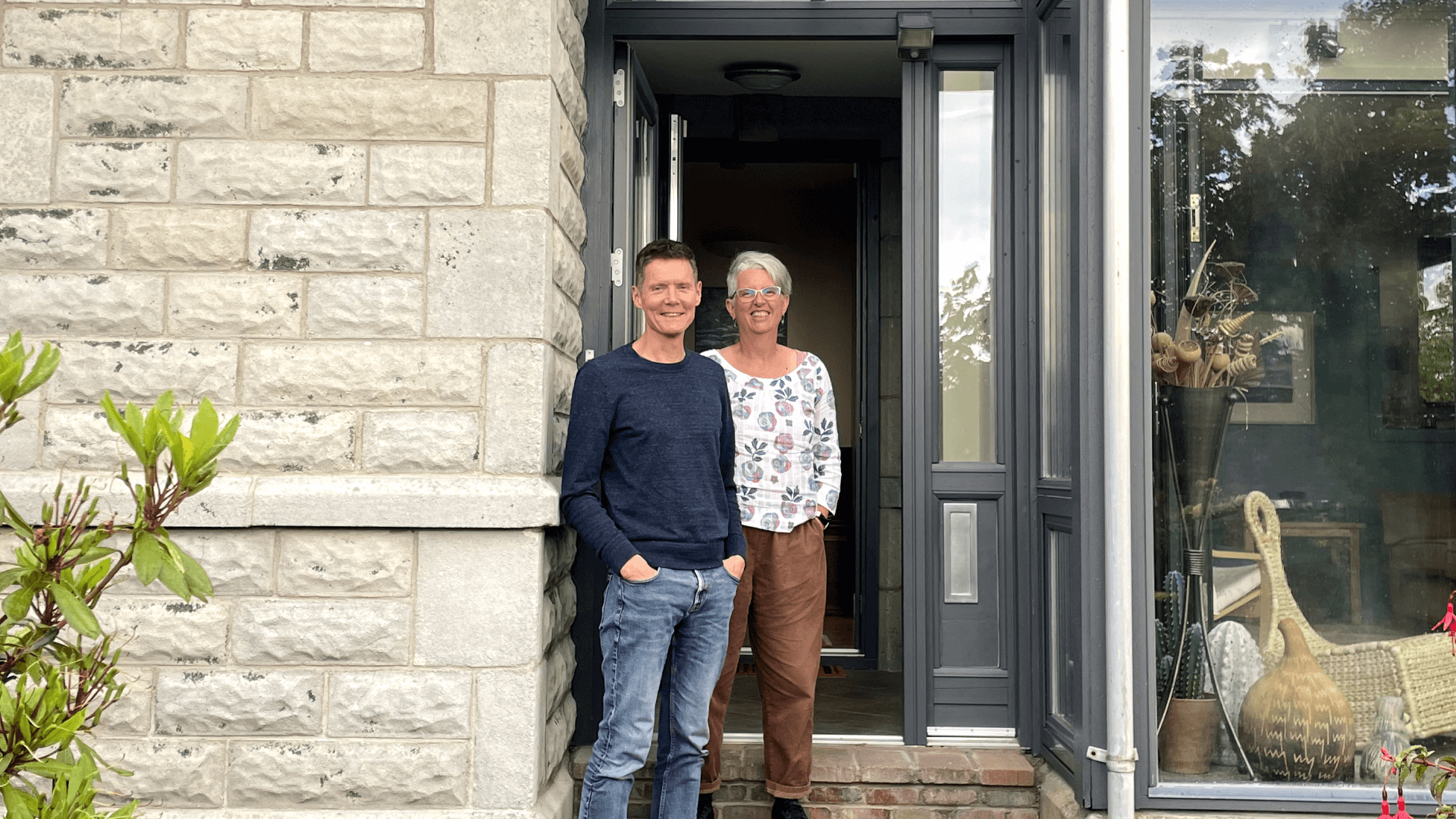
starting off
Nick and Annette built a single-storey side extension to their house around 17 years ago when their children were still very young.
“We tried to make the extension environmentally friendly and well insulated, but we didn’t really have a picture of the house’s overall state,” says Nick.
The extension proved to be “a bit of a saga” and discouraged the couple from tackling any renovations for at least another decade. Now that their children have left home, they have more space and time to explore energy efficiency measures.
“Two years ago, we had been thinking about doing more fundamental work and getting off gas, which is our goal,” says Nick.
Nick began researching online about what was possible and picked up the ‘fabric first’ approach to improving home energy efficiency. He then discovered Loco Home Retrofit, which was just starting up at that point.
“We joined Loco Home and got one of their surveys, which helped focus our thinking,” says Nick.
“One thing that surprised me from the Loco Home survey was the amount of heat lost through the floor – we have a suspended timber floor in most of the house. Also, the amount of heat lost through ventilation and lack of airtightness,” he adds.
“Two years ago, we had been thinking about doing more fundamental work and getting off gas, which is our goal.”
JOINING LOCO HOME
The Loco Home survey prompted Nick and Annette to focus on draught exclusion. The couple had already had cavity wall and loft insulation added and replaced windows.
“We got good double glazing. I’ve done a lot of work to ensure the windows are properly sealed into the wall, so there’s no draught,” says Nick.
“I’ve also just finished lifting and insulating part of the floor downstairs. I’ve insulated two rooms, and I might do a third one soon, but I’m not rushing to do that yet.”
“When I did the second floor, we also removed the gas fire and installed a bigger radiator, using the Loco Home survey to estimate the size we might need once we have a heat pump.”
Nick is happy to take on some jobs himself – those that are not very technical and where attention to detail really matters.
“Those jobs where you’re making sure you tape all the membranes to the wall and minimising the gaps. If you trust someone else to do it, great, but the chances are they might not do it quite as thoroughly,” he says.
One job involved insulating the room-in-roof, which has lath and plaster walls to the outside air. Nick insulated the small loft space above half of the upstairs room, which was straightforward – the pitch of the walls proved to be more challenging.
“I did a lot of installation work, which involved crawling around very small spaces,” says Nick.
Nick used glass wool held on by netting. “It’s an okay job, but not particularly high-spec,” he adds.
“But there are still significant bits that you can’t reach, like the sloping walls of the upstairs and the cheeks and roof of the dormer. They are still completely uninsulated.”
“We removed the gas fire and installed a bigger radiator, using the Loco Home survey to estimate the size we might need once we have a heat pump.”
As Nick and Annette move towards eliminating gas, they have removed the gas fire and are getting quotes for an induction hob.
“The heat pump will probably be the last job of the three, but then that’s the end of gas,” says Nick.
From a starting position of ‘fabric first’, Nick now believes that a heat pump should be their priority.
“In the past six months, I’ve picked up a different message: heat pump first,” he says. “So rather than thinking about how to do a whole load of energy efficiency improvements, get the heat pump in sooner rather than later.”
“My understanding is that the moment you install a heat pump, your emissions go down by a factor of four or five, whereas each energy efficiency measure takes it down by a few per cent,” he adds.
Nick recently posted a message on the Loco Home WhatsApp chat asking for heat pump recommendations and received several suggestions. He is now ready to start speaking to installers. The couple have also consulted friends who have installed heat pumps and regularly join Loco Home’s webinars to hear from those who have undergone similar projects.
The couple plan to install their heat pump in the next few months, ideally before next winter.
The next significant project upstairs is the room-in-roof insulation. “It’s a big and very messy project,” says Nick. “They’ll have to drop lath and plaster walls, creating a huge amount of dust, but it will transform the heat loss upstairs.”
“The moment you put a heat pump in, your emissions go down by a factor of four or five.”
The couple has found the Loco Home community to be incredibly helpful in learning from other people’s experiences.
“You can always ask questions about heat pumps or very small things and get useful information back. For example, someone posted a nice thing about a particular brand of draft excluder they’d found that was very effective on their front door,” he says.
Nick says Loco Home is proving to be a valuable community not only through word-of-mouth recommendations but also through its links to tradespeople who are keen to learn how to do things correctly.
“Picking the right tradesperson for the job is crucial, and I think that’s one of the best ways that Loco Home can help. It’s a growing market. There are a lot of people who are going to need to improve the energy efficiency of their buildings because of coming regulations and the rising price of fuel,” adds Nick.
“Our goal is to stop using gas, and we know roughly what the cost will be. We’re fortunate that we can find the money for it.”
“Picking the right tradesperson for the job is crucial – that’s one of the best ways that Loco Home can help.”
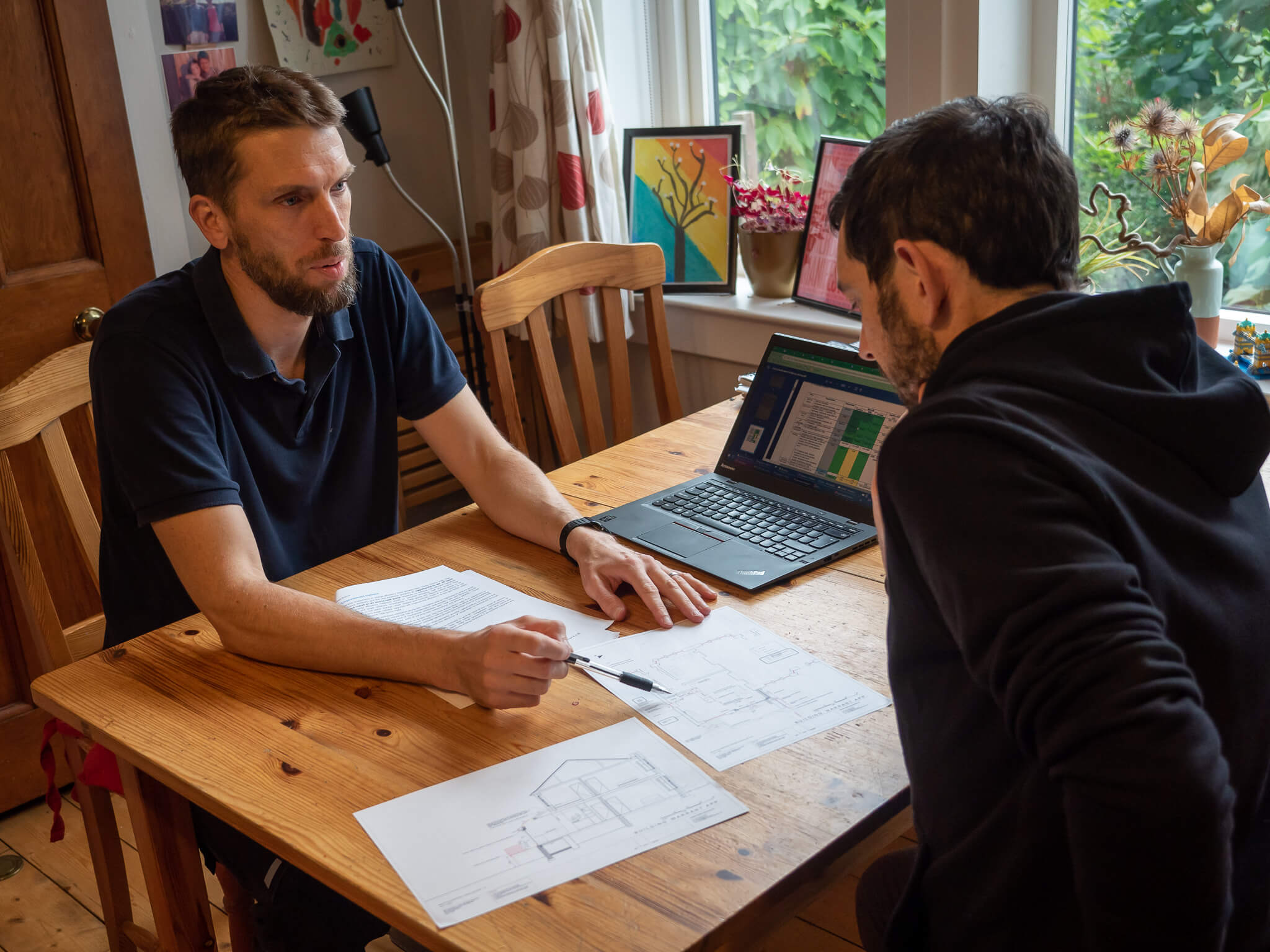
Loco Home’s Whole House Assessment services are helpful to anybody who is stuck with their retrofit or simply unsure where to start. To learn more, listen to Loco Home member Sarah Buchannan talk about her assessment on the Accelerate to Zero podcast, or click below.
